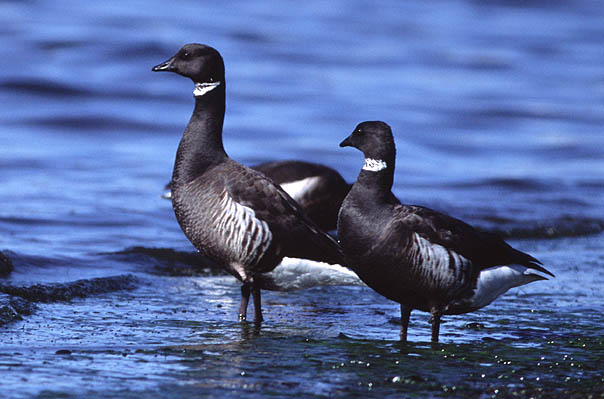
Date: 2003-01-27
Lens: Canon 400mm F5.6

 Brant
Branta bernicla
Brant
Branta bernicla
 Description
DescriptionBrants primarily feed on green plant matter, and in particular eelgrass. The destruction of eelgrass by disease in the 1930s caused a decline in the number of Brants. A seaweed called "sea lettuce" sustained the remaining birds until the eelgrass could recover. Today, eelgrass is back and the Brants are thriving, with about 100,000 wintering on the east coast and 150,000 on the west coast. In winter, these geese feed in large flocks on mudflats. Unlike Canada Geese, which fly in a V formation, or Snow Geese, which fly in an arc, Brants fly in a large, erratic flock, constantly shifting positions.
Black head, neck, breast, tail, bill, legs and feet. Pale belly. Collar of white lines on upper neck. Dark brown back and wings. Large white rump patch. Atlantic species has white flanks and lighter back and belly. Sexes similar. 17 inches in length.
Salt marshes, bays and estuaries during winter. Breeds in the Arctic.
 Nesting
Nesting3-5 dull-white eggs. The eggs have a 22-26 day incubation period. Fledging occurs in 40-50 days. The nest is a mass of moss and down built on the Arctic tundra. Nests in loose colonies.